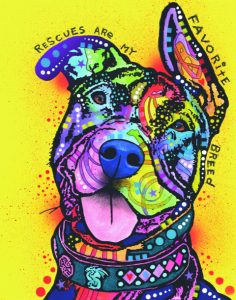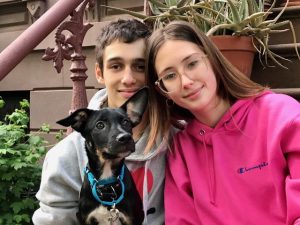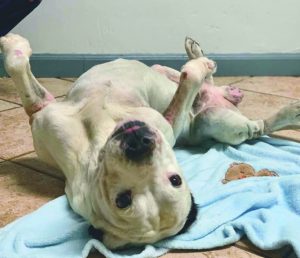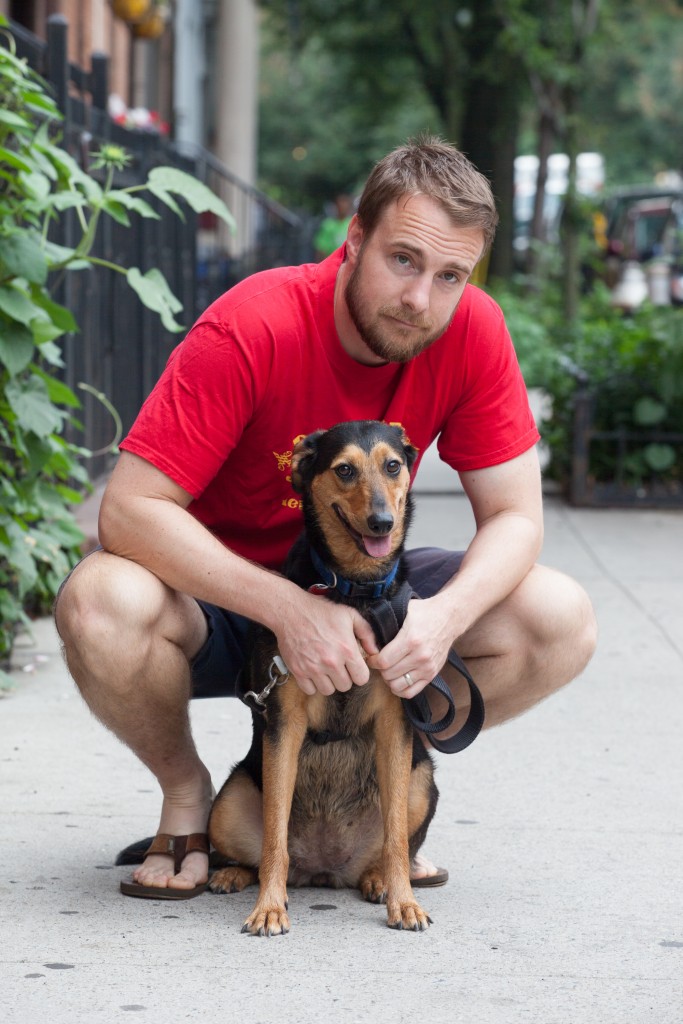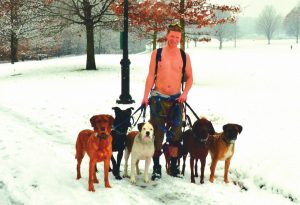
The overall mental health and wellbeing of our neighborhood (and entire planet) has shifted due to the Covid-19 Pandemic. With new stresses, a global financial crisis, and loved ones lost, there is much that can’t be replaced. Through it all, many of us have found solace in our new and old pets. Because individuals and families are spending more time at home than ever before, Park Slope has seen a “Puppy Boom.”
The Kingham family (Stuart, Roz, and 10-year-old Isla) rescued German-Shepard mix Macy to help uplift their spirits. While reluctant before Covid, Roz knew that getting a dog would give them something positive to focus on after Isla kept mentioning her experience with remote learning as “lonely.” Stuart reflected on his increased stress from all-day screen time, working from home, and worrying about the health and safety of his family, as a kind of low-grade PTSD. He reflects, “Everything was a worry, even going to stores.”
Though housetraining Macy was a challenge, they agree it has far outweighed the stresses of the outside world as the Kingham family saw their commitment to the new canine family member pay off. Over 2 months later, Macy is already growing up alongside Isla. Taking the time to step away from their screens and heavy workload, the endless news cycle, and the grief of pandemic losses to take care of puppy Macy has made Staut, Roz, and Isla feel a bit safer and happier.
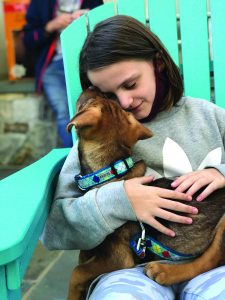
They train her together and connect with other dog-owners in the neighborhood. Roz says, “There’s definitely a dog community in Park Slope so just making that human connection on walks with other dog owners has been nice; everyone stops to talk when you have a puppy!” Their new routine includes early morning off-leash play in the park, after-school walks, and evenings spent on the front stoop where they sit to watch the world go by.
You’ll find many families enjoying similar daily pet pleasures. Park Slope has 10 dog parks, including the Prospect Park Dog Beach, making it an amazing community for pet owners. Pets, especially dogs and cats, are known to reduce stress, anxiety, and depression, to ease loneliness and encourage exercise and playfulness. They also help children to grow up more secure and active, and provide valuable companionship for older adults.
These days everyone needs some extra stability, joy, and positive coping methods, one reason why pet adoption and sales have been through the roof this past year. Even veteran pet owners have become more appreciative and formed closer bonds with their furry friends.
For example, the pandemic has heightened Park Slope resident, Ingrid’s anxiety; making her less motivated to deal with tasks beyond short term consideration. Ingrid said, “ Much of the structure I’ve built into my life over the years vanished overnight, along with any sense of what the future could or should look like.” Her two cats, Cabiria aka Cabbie and Jean Harlow whom she’s had for over 3-years, have brought extra companionship and cuddles during these uncertain months of quarantining at home. “Taking care of the cats provide some structure to the days, and requires me to think about something other than myself… So I actually have something to discuss with friends or co-workers that isn’t horrible pandemic news or politics.” She’s found exchanging silly cat photos and having Cabbie and Jean meow over speakerphone a sure-fire way to bring a smile to anyone’s face.

Similarly, the unforeseeable future had spiked Diana Kane’s anxiety, so after some discussion adopting a dog felt like the right decision. And it was! Her family’s new 4-month-old rescue from Puerto Rico, Appa (named after the flying-bison from Avatar: The Last Airbender), has been a blessing for their mental and physical health. Diana and her family has been able to find peace and joy. She said, “I think Disney has it wrong: the Happiest Place on Earth is actually off-leash in Prospect Park.”
Giselle Navarro and her partner adopted a Jindo mix named Pico just before the city shut down. While worrying about their health and safety and only communicating with others through screens, they felt lucky to have Pico by their side. By structuring their quarantine days around the new puppy, their new routine for the new normal provides time to safely leave the apartment, stay motivated to train together, and actually get a steadier sleep schedule.
Pico’s need for cuddles and play was also a welcome distraction for Giselle. “She’s always so happy, I frequently tell others that I’m not sure how I would be getting through the pandemic if we didn’t have Pico. Living through this has been tough, but having her has made it a little bit easier. Even if I’m not feeling great, her good mood rubs off on me.”

